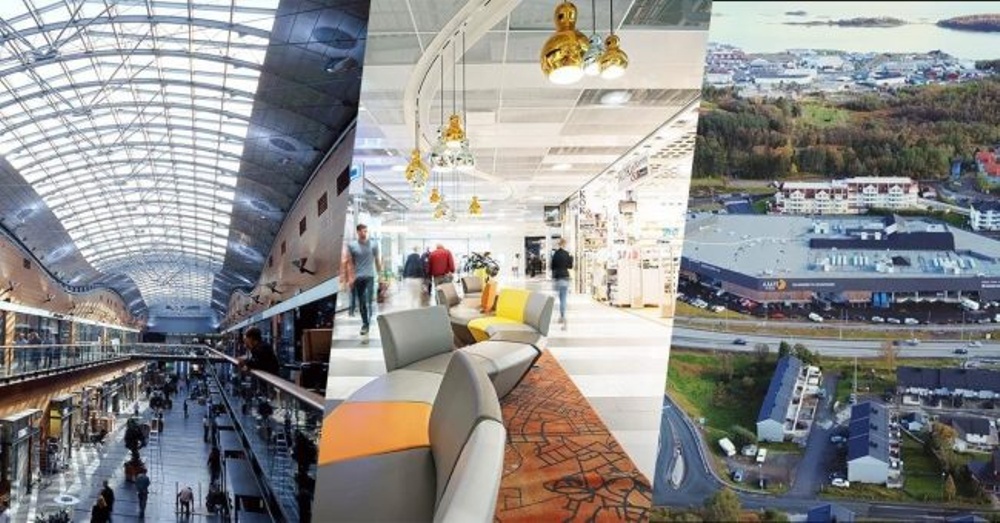The New Commercial Space is Emerging

In 2022, NCSC was redefined as Nordic Commercial Spaces & Communities. The reason for the name change was an ongoing transformation that affects shopping centers, retail parks, department stores, shops, and other physical commercial destinations.
The new commercial space emerges from the traditional shopping center, a legacy that is now complemented by a broader offer and adapted to a digitized mobile society where new behaviors and expectations demand seamless experiences.
It’s no longer just about shopping. It’s about striking the ideal balance between services, experiences, and necessities, to innovate commerce and serve communities.
A Space with a Broader Focus
New commercial players within health, community services and entertainment are being added to the mix. One great example of this is Gallerian in Stockholm, which was named Commercial Space of the Year in the NCSC Nordic Awards 2023.
The new commercial space also includes workplaces as well as housing to an increasing extent. In Carlsberg Byen in Copenhagen, historic streets are integrated with shopping, restaurants, parks, offices and housing. The result is a district created for the new urban life. The Barcode in Oslo and Slakthusområdet in Stockholm are other examples of this development.
Norrøna House, the brand's new immersive Flagship store outside Oslo shows how the boundaries between offices, shopping and experiences can be blurred. This while the brand’s focus on sustainability is increasing.
The Lippulaiva shopping center in Espoo, Finland, operates in a carbon-neutral building with one of Europe's largest geo-energy installations. It is also an example of how property owners are developing sustainable commercial spaces – with a combination of housing, offices, retail and services.
The Rebirth of the Physical Store
At the same time, the physical store is being reborn. It is becoming a space for inspiration, knowledge exchange, logistics and events. All adapted to the local community.
Sports brands such as Nike, Hoka and Rapha are examples of this. They put their community at the heart of the store's design, purpose and offer. Apple's flagships have been developing into knowledge hubs for some time.
Moreover, brands such as Lyko and Caia Cosmetics have shown how the store still has a very strong appeal. Their physical establishments have become destinations that raise interest in the area in which they operate.
Efficient Destinations that Facilitate
For the vast majority of retailers, it is still about selling products. And for most consumers, the commercial venue remains a destination for shopping and running errands.
Studies show that the pandemic and tough economic times have contributed to a decrease in the number of shopping trips. You want to get more done at the same time.
For commercial destinations, this requires efficiency and user-friendliness. Factors affecting supply, but also practical design issues, digital capabilities, navigation, communications and fulfillment.
In the Middle East, we see examples such as the operator Majid Al Futtaim experimenting with dark stores in their centers. Only intended for the delivery of goods.
In Nordic latitudes, Gränbystaden in Uppsala has broken new ground – Uppsala University Hospital now offers cancer treatments in the shopping center. Generous parking facilities, good transport links and the ability to conduct other business make life easier for patients and their families.
Collaboration is the key to success
What emerges is a destination that facilitates, has strong local roots and deep insights into the needs and expectations of its visitors. A space where visitors spend a lot of time and which becomes a natural part of the everyday life of the local community.
As in society at large, the need for collaboration is high. NCSC will continue to work to ensure that the new commercial site's stakeholders find successful ways forward.
Summary
- The new commercial space has its origins in traditional shopping centers.
- It adapts to the digitized mobile society and offers seamless experiences.
- Retailers and property owners are adapting to new conditions.
- Consumers want to move seamlessly between digital and physical.
- The procurement model is broadened to focus on health, community services and entertainment.
- The new store adds functionality beyond sales.
- This places new demands on efficiency and user-friendliness.
About NCSC
Nordic Commercial Spaces & Communities (NCSC) is the organization representing the Shopping Center Industry in the Nordic market. Founded in 1986, NCSC today has approximately 1 200 members from Denmark, Finland, Norway, Sweden, Iceland and other European countries. The list of members include a wide variety of interest groups, ranging from real estate companies, investors, center managers, retailers, service industries, trade associations and city planners, to government and municipal authorities